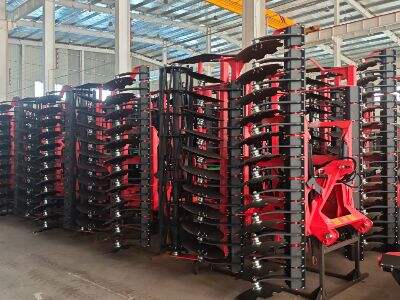Farmers use the compact disc harrow to farm in their fields. These machines have round, sharp discs that turn and rip into the ground and fight with the larger clumps or balls of dirt so that plants can grow including Strength of Material In this experiment, you will learn how a compact disc harrow changes the first few inches of soil.
What Compact Disc Harrows has to do with Soil Compaction
As the farmers drive the compact disc harrows over their fields, the discs compact the soil into a flat surface. This phenomenon is referred to as soil compaction. A certain amount of compaction is required to make a good bed for seeds to grow in, too much is detrimenal to the soil. It can also create a barrier to plant roots that want to grow and find nutrients, water and air. That means farmers must be careful not to compact the soil too much with compact disc harrows.
Investigations on the effects of compact disc harrows on soil structure
Soil aggregates are simply clumps of soil particles; they are held together by organic matter, such as roots or fungi. These aggregates are needed for soil structure and to create pores for air and water to pass through the soil as it dries and becomes wet. When compact discs are used, these aggregates can be broken up causing the loss of soil and nutrients. Farmers should monitor the impact of their compact power disc harrow on the soil aggregates and adjust if necessary.
Advantages and disadvantages the use of the disk plows for the processing the soil
Text Compact disc harrows have their positive and negative by effects on the soil. On the one hand, they can use a lot of hard soil to break if up and make it ready for plants. On the flip side, if used improperly, they can cause soil compaction and erosion. These advantages and disadvantages need to be considered before farmers decide whether or not, when and how to use a compact disc harrow on their fields.
On the relation between CD harrows and soil erosion
Soil erosion is a major issue that occurs when the soil is not managed correctly. If power disc harrow are operated too deeply and too rapidly, they can disrupt soil and render it susceptible to erosion. This can lead to topsoil loss, where most plants’ essential nutrients are located. In order to minimize soil erosion damage, farmers should be cautious in their operation of compact disc harrows and practice other soil conservation measures, such as planting cover crops and using mulch.
Benefiting soil health with strategic application of CDH’s
Although disc harrows can be harmful to soil structure, compact power disc harrow can be utilized to improve soil health. By manipulating the depth and speed of the discs, farmers can reduce compaction and maintain soil clods. They can also integrate the use of compact disk harrows with other soil-building practices, such as rotation of crops and composting. Through comprehensive soil management, farmers can have healthy soil, and higher crop yields for the long term.
Table of Contents
- What Compact Disc Harrows has to do with Soil Compaction
- Investigations on the effects of compact disc harrows on soil structure
- Advantages and disadvantages the use of the disk plows for the processing the soil
- On the relation between CD harrows and soil erosion
- Benefiting soil health with strategic application of CDH’s

